Top 7 Famous Temples in Varanasi You Can’t Miss
Famous Temples in Varanasi: Varanasi, also called Kashi or Banaras, the city of Lord Shiva, is believed to achieve liberation.…
 0%
0%

Richest Temples in India: The temples in India are the spiritual places to go through your emotional or religious journey.
In this article, we will list the comprehensive and updated temples based on their net worth, annual charities, and asset value.

India is home to some of the most religiously revered and financially wealthy temples in the world, which you should know about.
With huge gold reserves, precious gems, and unlimited donations from millions of devotees, the temples not only offer spiritual sanctuaries but also serve as a sign of immense prosperity. Let’s discover the wealthiest temple of India.
These are the comprehensive and updated richest temples in India according to their net worth or asset values.
Location: Tirupati, Andhra Pradesh
Estimated value: ₹2.5 lakh crores; annual revenue: ₹4,385 crores.
>Net worth: ₹2.26 lakh crore as detailed in the 2022 white paper from Tirumala Tirupati Devasthanams (TTD), which includes fixed deposits (₹15,938 cr), gold, land, buildings, and assets.
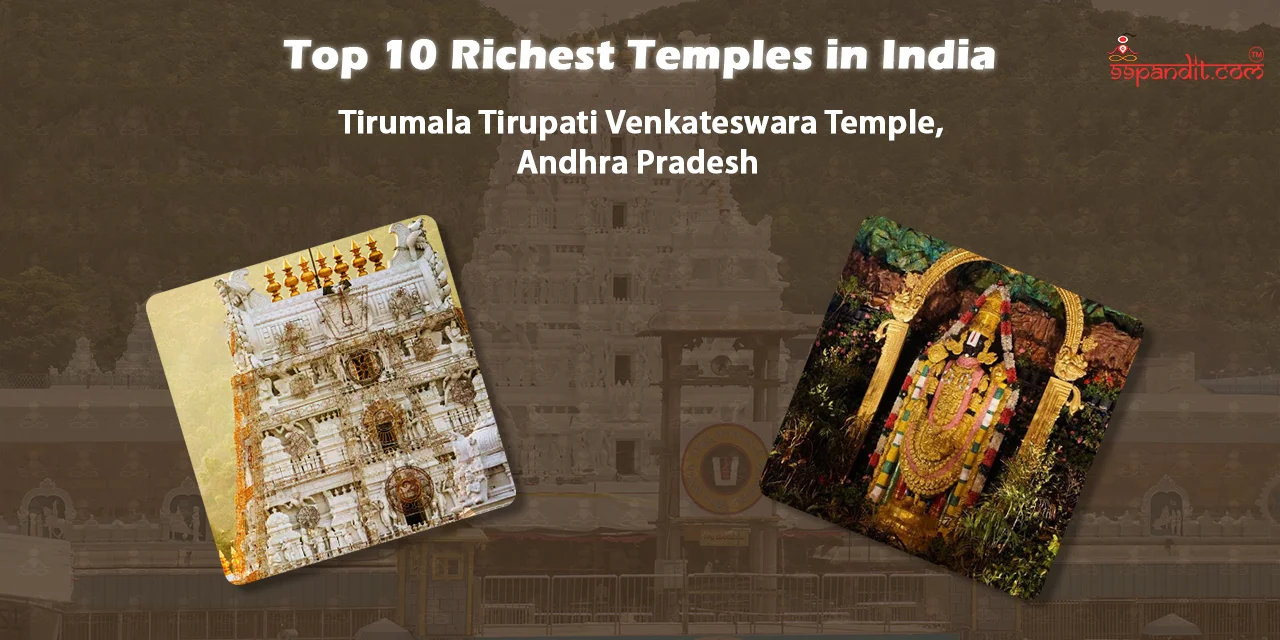
**** Recently, the TTD authorized a budget of ₹5,258 crore for the financial year 2025-26, with hundi revenues projected to reach ₹1,729 crore.
Gold holdings: 10.25 tons of gold, worth around ₹5,309 crores, have been deposited in banks.
History & Significance: The Tirumala Tirupati Temple is one of the richest temples with millions of visitors every year. The temple is dedicated to lord Venkateshwara, who is the incarnation of lord vishnu.
It was established around 300 A.D., as it’s believed to grant the wishes of all its worshippers.
The hundi collection of temple and donation-driven revenue streams is the largest among any spiritual place.
Location: Thiruvananthapuram, Kerala.
>Estimated Net Worth: Over ₹1.2 lakh crore (~US$20 billion).
>Net Worth: The gems from Vault A alone are worth around ₹1 lakh crore; the real value of the vault treasure – across five opened vaults – is estimated to be over ₹1.2 lakh crore (~US$17–20 billion).

****The main wealth source of the temple comes from ancient treasures, gold idols, antique jewelry, and other precious stored in underground vaults. Vault B is still unopened due to religious or legal considerations.
Notable Assets: Gold idols, coins from the Roman and Napoleonic era, gem-encrusted jewellery.
History & Significance: The temple dedicated to lord vishnu, Padmanabhswamy temple, developed in the Dravidian pattern, and is one of the 108 divya desams, and historically and traditionally managed by the Travancore royal family.
As per the audit of the temple in 2011, underground vaults revealed unimaginable treasures along with gold idols and coins, and many artifacts dated back to the 16th century.
The hidden treasure of Vault B remains a mystery and unopened due to a Supreme Court order and some mysterious spiritual facts.
Location: Shirdi, Maharashtra
Estimated Net Worth: ₹1,800+ crore
Assets: Including Bank holdings of around ₹1,800 cr, with collections more than ₹2,000 cr; physical assets include 380 kg of gold and 4,428 kg of silver.
****Approximately 25,000–50,000 devotees come to visit the Shirdi Sai Baba temple yearly.
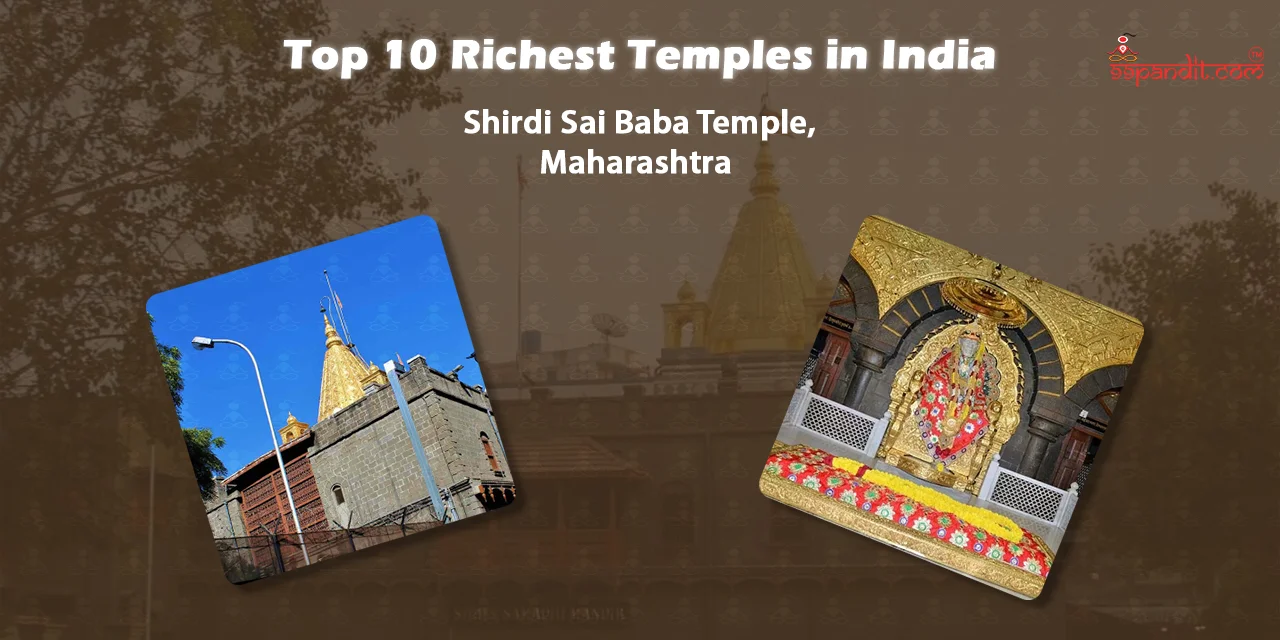
History & Significance: Sai Baba is the main deity of the temple, a 19th-century spiritual coach followed by many Hindus and muslims.
Built in 1922, the temple includes Sai Baba’s Samadhi, along with sanctums and halls depicting his life and teachings.
The temple’s premise draws millions of devotees from all around the world and is a sign of the unimaginable power of faith and spiritual unity.
The temple is located around 2296 km away from Mumbai. The donations made in the temple are in the form of cash, online, and also as gold and silver.
The temple attains 300-400 crores annually as a part of donations instead of contributions in gold or silver.
The temple trust runs two large hospitals, provides education scholarships, and gives free meals to thousands of people daily.
Location: Trikuta Hills, Jammu & Kashmir
Estimated Net Worth: Annual revenue ~₹500 crore
Annual Revenue: Around ₹500 cr, depending on pilgrim donations and offerings.
****The temple attracts approximately 10 million followers annually.
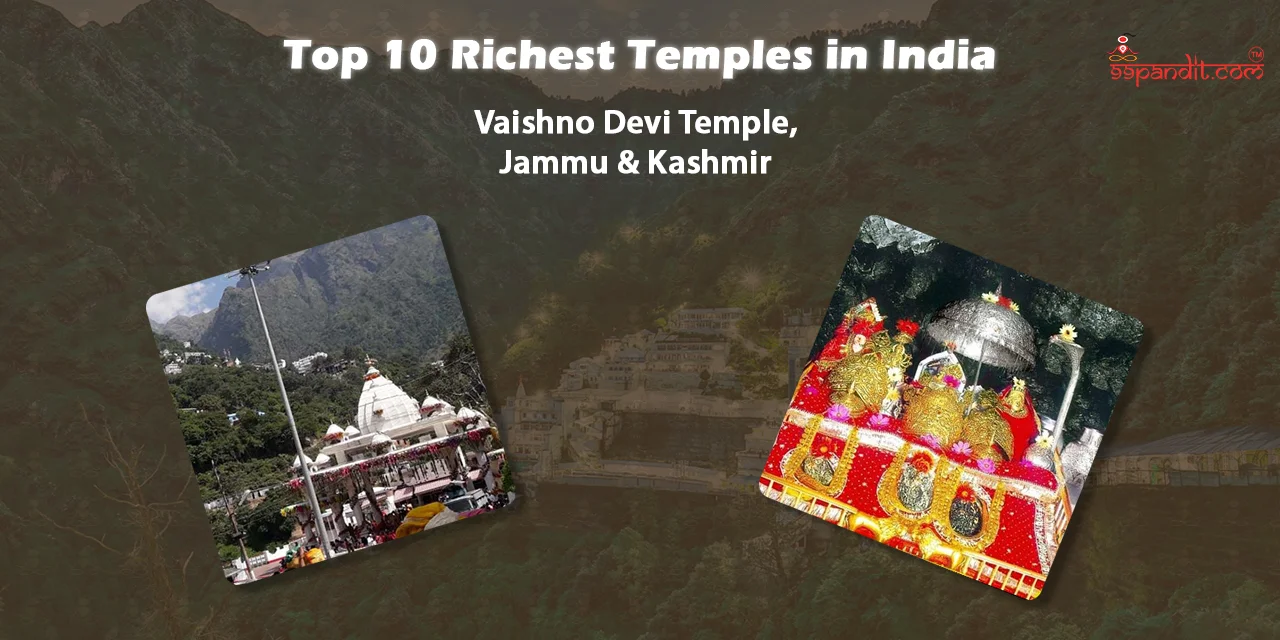
History & Significance: The temple is located at a height of 5,200 feet, as it’s one of the most auspicious sanctums dedicated to Goddess Shakti.
The followers undertake an uphill trek to reach the cave. Its roots are traced back to centuries-old folklore and sacred scriptures.
The donations come in the form of precious gems, tons of gold, and other important metals, which makes it the wealthiest temple of the country.
As per the Hindu people, the temple is very auspicious, and Mata blesses the people with whatever her children ask for. Every year, millions of devotees come to take the goddess’s blessings worldwide.
Location: Guruvayur, Kerala
Rough estimated net worth: ₹2,500 crore; annual revenue ~₹400 crore
Assets: The association owns 271 acres of land, as well as fixed deposits totaling ₹2,053 cr; gold assets contain 124 kg of plain gold, 72 kg of studded gold, and 6,073 kg of silver.
Annual Revenue: Under the Kerala Devaswom board, the annual revenue is thought of as figures made, which give the figures for inclusion in annual reports – the annual revenue is almost ₹400 cr.

****The temple has a substantial bank deposit amount, calculated at Rs. 1,737.04 crore. The temple owns 271.05 acres of land.
History & Significance: The ‘Dwarka of south’, Guruvayur temple is devoted to lord krishna.
This 5000-year-old temple is believed to have been established when Lord Krishna asked Uddhava to develop the deity here. It’s one of the most auspicious pilgrimage sites in Kerala.
Along with its religious importance, the temple has noteworthy financial assets, including gold, silver, and properties in Kerala.
There are elephant camps, spiritual schools, marriage halls, and daily free food distribution managed by the temple’s trust.
Location: Amritsar, Punjab
Estimated Net Worth: Not publicly shared; annual income ~₹500 crore.
Annual Revenue: Estimated at ₹500 cr, comes from donations and offerings.
Gold Content: Around 400 kg was used in designing the upper levels.

History & Significance: The Golden Temple is called ‘Harmandir sahib’, which is the most sacred shrine in the sikh community.
It was made in the 16th century by Guru Arjan Dev and was gold-plated by Maharaja Ranjit Singh. The temple’s architecture is a blend of Hindu and Islamic architecture.
This is famous for its community kitchen, which means 24/7 langar seva (free meals) to more than 100,000 devotees daily. It was made using 400kg of gold at the upper level, hence called the Golden Temple.
Gurudwara Parbandhak Committee manages the temple to promote equality, community service, and volunteerism on a large scale.
This is the holiest pilgrimage and was founded by the fourth guru of the Sikhs, Guru Ram Das. The temple was designed by the fifth guru, Guru Arjan.
Location: Mumbai, Maharashtra
Estimated Net Worth: ₹125+ crore
Annual Revenue: ₹133 cr in FY 2024–25, up from ₹114 cr the previous year
****The temple expects a further upgrade in revenue to ₹154 crore in the coming financial year.
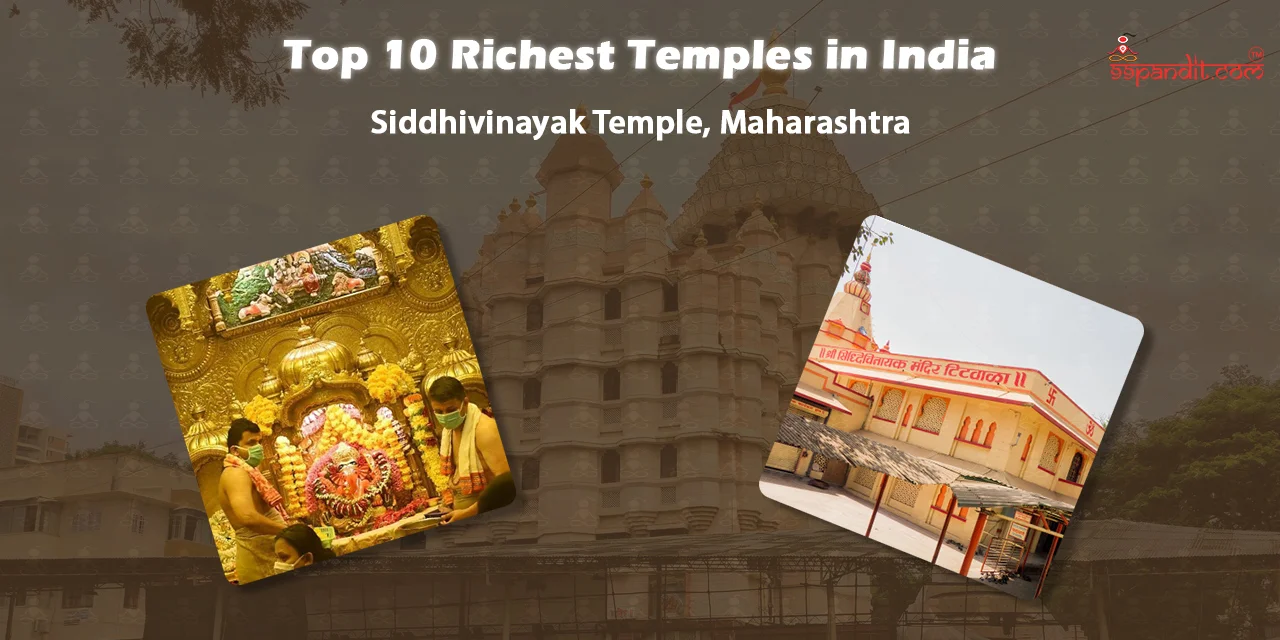
History & Significance: The temple is devoted to lord ganesha, as it was built in 1801 and has since become one of the wealthiest and most visited temples in India.
The followers believe that prayers here are especially powerful. The temple is often visited by Bollywood celebrities and politicians, which adds to its fame.
Bappa fulfills his followers’ wishes. The trust of the temple manages hospitals, scholarships, and donations for underprivileged children.
Laxman Vithu and Deubai Patil developed the temple. The temple is coated with almost 4 kg of gold that was charited by a Kolkata-based businessman.
Location: Veraval, Gujarat
Estimated Net Worth: Not publicly shared; annual revenue ~₹33 crore
Annual Revenue: Around ₹33 cr, including donations and temple land revenue
History & Significance: Somnath is one of the 12 jyotirlingas of lord shiva, which has been raided and rediscovered multiple times by foreign incursions.
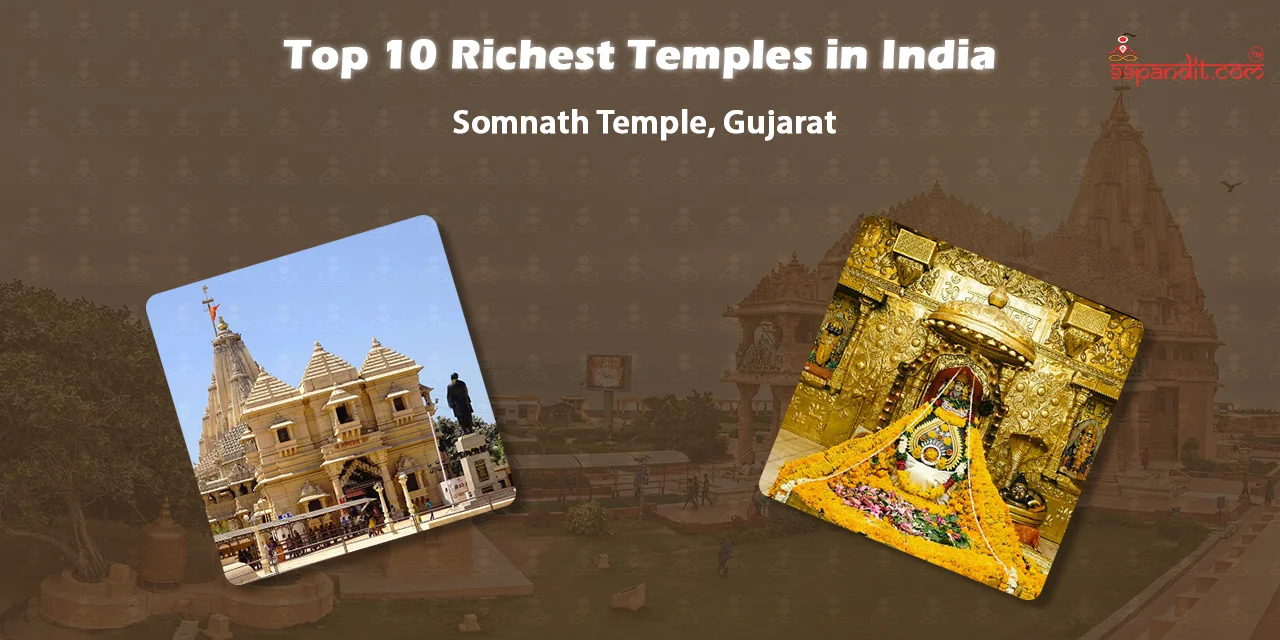
Sardar Vallabhbhai Patel designed it in 1951, symbolizing Hindu resilience and rebirth. The temple, once destroyed and looted, still stands as a symbol of faith and wealth.
The temple’s income has not been shared yet, but it’s known for its wide possession of assets, along with 1700 acres of land.
A lot of legends connected with the temple; the word somnath means ‘lord of soma’. This sacred place has never lost faith in the hearts of Hindus. It has a huge following and receives a large amount of donations every year.
Location: Pathanamthitta, Kerala
Estimated Net Worth: ₹245 crore
Annual Revenue: ₹320 cr during the 2023 pilgrimage season
Assets: 227.8 kg gold and 2,994 kg silver; fixed deposits noted at ₹0.417 cr (Rs 41.74 lakh)
History & Significance: A unique temple devoted to lord Ayyappa has a provision, which is that people have to keep a 41-day penance to honor the deity.
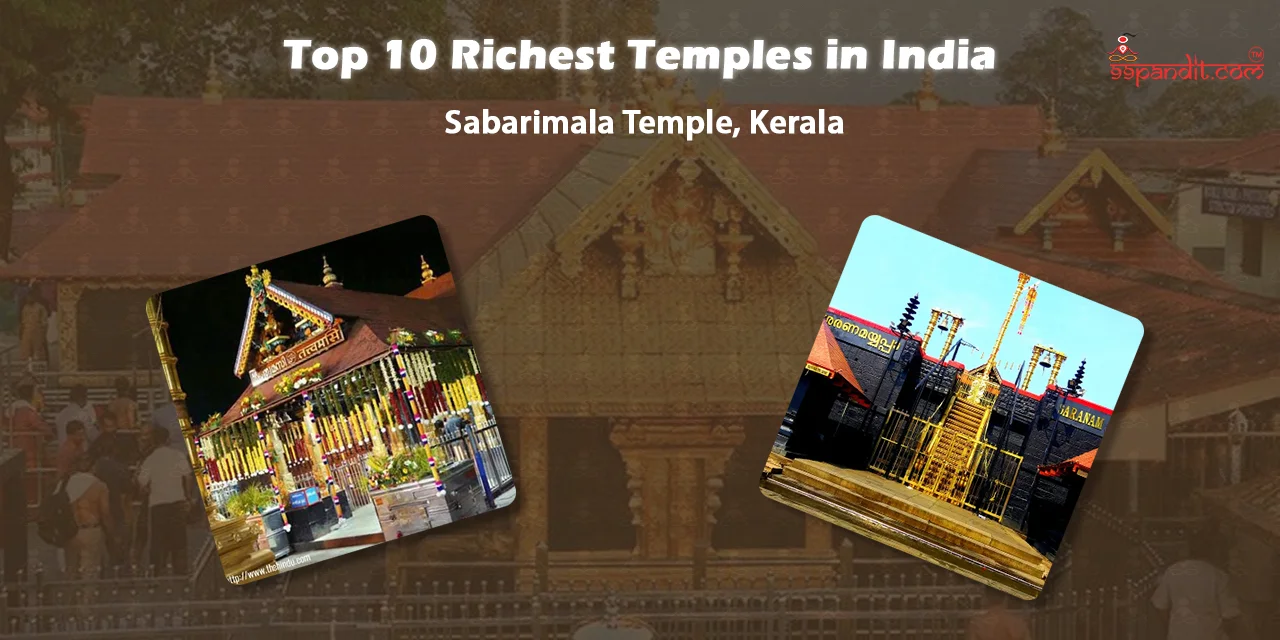
It is established deep in the forest and has one of the world’s most prominent pilgrimages annually. The temple is open for a limited time period every year.
It’s located at 4,133 feet above sea level and is the most visited site in Kerala. Every year, around 100 million visitors seek blessings from the deity.
The average net worth of this temple is around 245 crore. It gathers more than 15 kg of gold and annual donations of more than 105 crores.
Location: Puri, Odisha
Estimated Net Worth: ₹150+ crore
Assets: Gold ornament values in crores (e.g., “Suna Besha” jewellery)
Net Worth: Estimated ₹150+ cr, based on combined land, jewellery, and donations.
History & Significance: To complete the list of the richest temples in India, Jagannath Puri temple would be the last one.
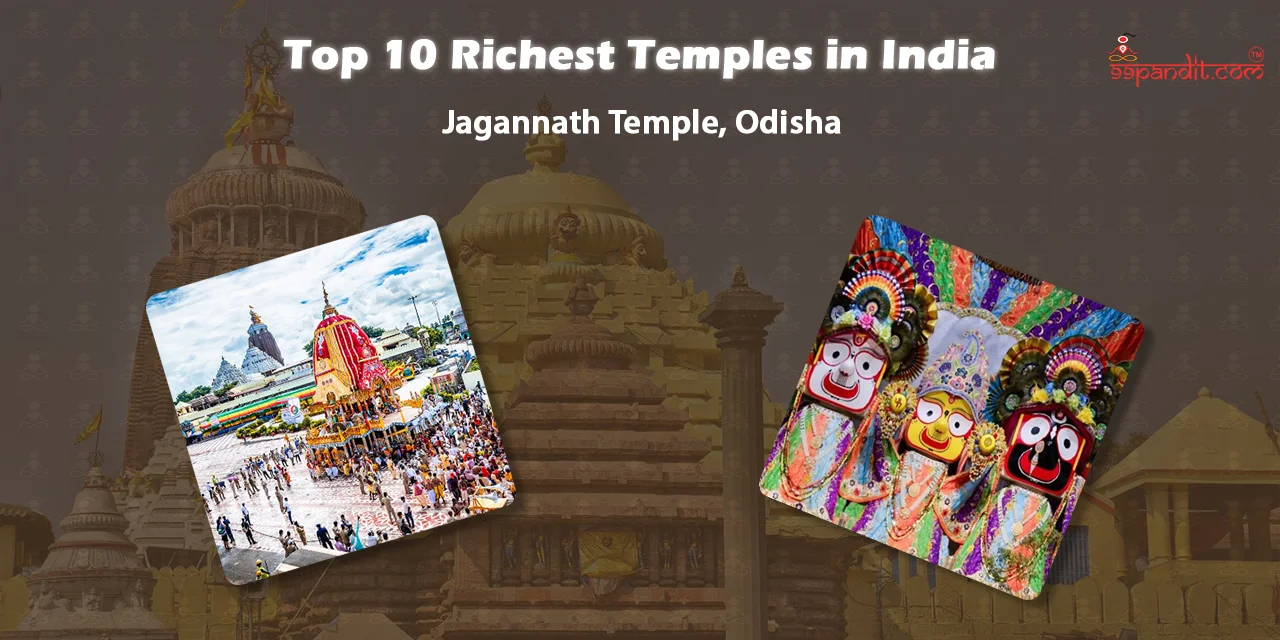
Lord Jagannath, the primary deity of the temple, is situated along with his brother Balabhadra and sister Subhadra.
This is one of the oldest temples in India, and it contains some unknown scientific facts. According to the 2010 report, the estimated donation was more than 150 crore.
And at the time of the festival, the temple receives huge donations. Presently, the worth is INR 150 crore.
The temple is popular for its annual rath yatra where the largest chariots of lord take out through the city.
King Anantavarman Chodagana developed the temple in the 12th century. This is one of the Chardham pilgrimages. In this temple, non-Hindus are not allowed.
The kitchen of Jagannath temple is one of the largest kitchens in the world, where food is cooked for more than 100,000 people every day.
India’s richest temples symbolize divine wealth, spiritual power, charity, culture, and community upliftment.
Their massive financial strength is a direct result of centuries of unwavering devotion. These temples donate funds to education, health, shelter, and food for devotees.
Their histories give a reminder that in India, belief is not only a personal journey, but a social force that aligns society, drives economies, and holds traditions.
Doesn’t knowing the mystery of these temples sound interesting, especially the Padmanabhswamy temple? Discovering the richest Indian temples gives a profound insight into the spiritual and cultural heritage of the country.
The famous Hindu pilgrimage sites not just depict immense architectural beauty but also represent the devotion and beliefs of millions of devotees.
Every place shares a unique story of wealth and dedication, from the mesmerizing Tirupati Venkateshwara temple to the prosperous Somnath temple.
Book your tickets and discover the facts and myths of these temples that connect you with India’s rich customs and traditions.
Book a verified pandit with 99Pandit to perform any Hindu ritual or puja at these places. The team will help you effortlessly execute a Vedic ritual in your way.

100% FREE CALL TO DECIDE DATE(MUHURAT)

Table Of Content
Filters by categories
All Pujas
Puja On Special Events
Upcoming Pujas
Dosha Nivaran Pujas
Mukti Karmas
Filters by Trending Topics
Filters by Regions
North Indian Pujas
South Indian Pujas